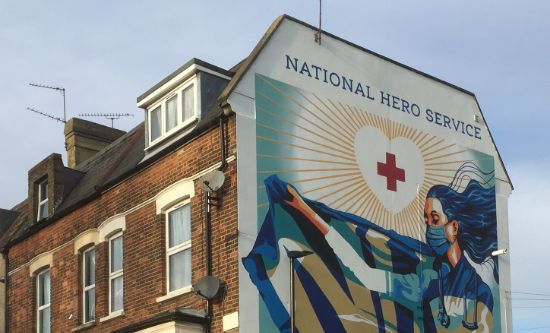
In July 2022, only four out of 10 patients were able to leave hospital when fit to do so as they awaited a care package. Extreme workforce shortages in the adult social care sector make timely discharge impossible. 99% of healthcare leaders surveyed in July 2022 agreed that there was a social care workforce crisis in their area. It means hospital wards are full, people who need admission to a ward are stuck in A&E, ambulances are queuing outside because A&E is full, and people at home are waiting hours for an ambulance. Britain has fewer beds, fewer clinical staff and doctors per head of population than almost all of the comparator health systems in the 38 countries of the OECD. In particular:
- The average emergency ambulance response time for October 2022 in England for suspected heart attacks and strokes was 61 minutes 19 seconds. The target is 18 minutes.
- Antrim Area Hospital in the north of Ireland in mid-November was so full that Northern Health and Social Care Trust declared a major incident and issued a plea for people not to attend in any circumstances.
- 500,000 people are waiting for social care assessment. 350,000 are waiting for ‘time-sensitive’ cardiac care and people are waiting years for ‘routine’ appointments.
- It is estimated that it may be over ten years before the cancer backlog from the pandemic can be addressed. Charity Cancer Research UK warns that every month 65,000 people in England are waiting over the 28-day target to find out if they have cancer. The NHS long term plan from 2019 said that by 2028, 75% of cancers would be diagnosed at Stage 1 or 2 and that outcomes would improve to the extent that 55,000 more people each year would survive cancer for at least five years after diagnosis, and that 75% of people would know their diagnosis within 28 days of urgent referral. The Director of the Institute of Cancer Policy at King’s College said that the plan is no longer fit for purpose.
Staff
40,000 nurses left the NHS in 2021 (one in nine of the workforce) and over 30,000 have left in 2022. Many will go to work for an agency for more pay and flexibility. Agency staff spending increased by 20% in 2021 to £3bn in England. Government pay caps for agency workers, mostly doctors and nurses, have been breached repeatedly in order to fill shifts. There are 47,000 nursing vacancies. New entrant nurses have fallen by 8% in the last year and nurses now face £50,000 debt from university fees. As Health Secretary, Chancellor Jeremy Hunt abolished the bursary for nursing and midwifery students. They now face exhausting shifts where they may not be supernumerary as they should be since the team is so short-staffed. In the last ten years, inflation has taken 20% off nurses pay. Since 2010, nurses’ average earnings have increased by about 20% in cash terms, over the same period, prices have increased by 32% and average private sector pay by 41% and average public sector pay by 28%. Nurses are demanding a 17% increase, and have voted to strike to secure this.
Hannah Caller




